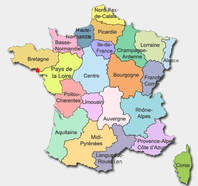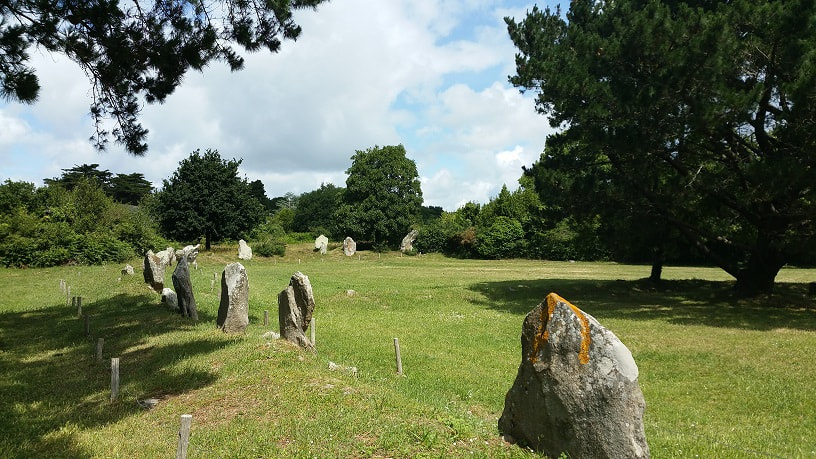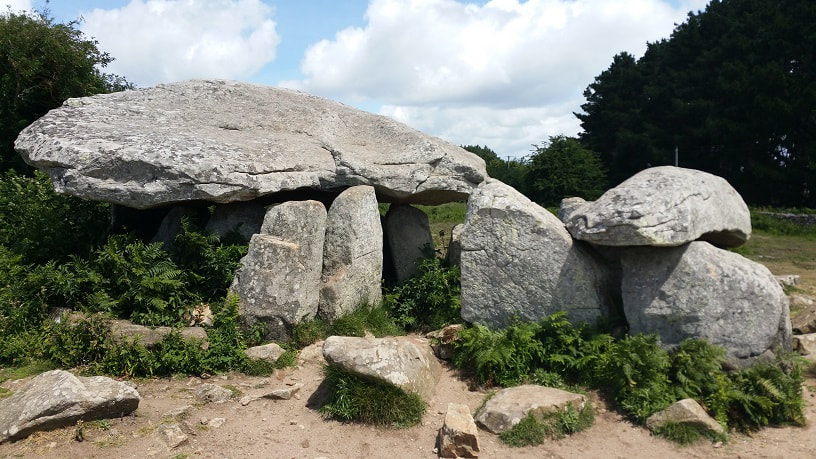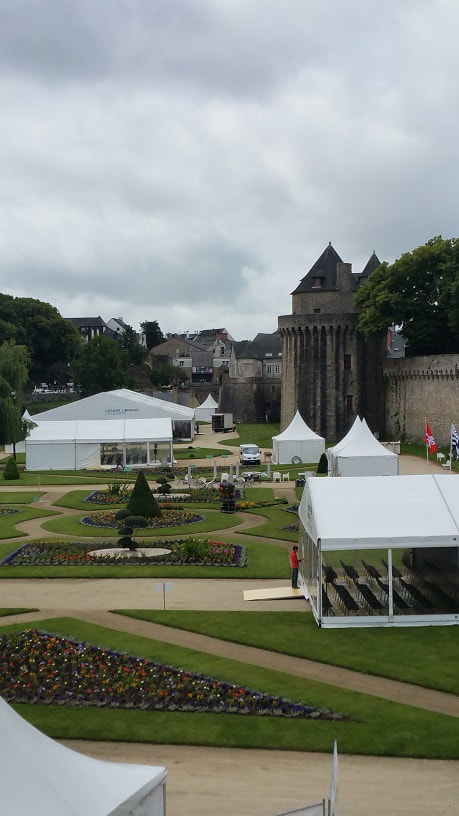
We picked the village of Damgan because Sylvianne, a good friend from Karen's Santa Cruz Speaks French Meetup, lives there. We stayed at the Hotel de la Plage which sits just across a quiet one-way street from the beach. Each room has spectacular ocean views of the coast to the south. We dined with Sylvianne at the amazing Latitude 47 restaurant in the hotel, so named because the hotel is located at that latitude as are two other places the owner had lived, Quebec City in Canada, and Budapest in Hungary.
Arriving on the island after the 5-minute boat ride, we rented bikes and started touring. The island is small, only about 4 miles long and a mile and a half wide, easily covered in a day on a bike. Our trip into prehistory began with a stop on the way out of the village at a famous cromlech. If you recall from my previous posts, a cromlech is a circle of stones (like the more famous Stonehenge). They appear to have had some religious, probably funereal significance to the ancient Celts, but no one knows for sure. While almost all the cromlechs found in Europe are circular, those in Brittany are not. This one was very large and oblong with a central stone (called a menhir) named Le Moine (the monk) as its focal point. We arrived at Le Moine to find several people lying at its base trying to receive the energy from the stone. This may sound a bit strange, but when you visit Brittany, especially the more remote parts of the granite-lined coast, you really do get an almost spiritual sense of 'groundedness' and permanence. But back to the Ile-aux-moines.
Returning to Damgan, we showered and met Sylvianne who took us on a walking tour of the village of Damgan. The next morning we went to the medieval walled city of Vannes.
The trip to the island is a bit expensive, and in peak seasons, you need to make reservations, but it's worth it.
The next day, we made our way to our ultimate destination in the north of Brittany.
If we've learned anything about Brittany, it's that there is huge variation in the climate, terrain, and even the culture. From the warm sunny beaches Morbihan in the south, to the stark, austerity of Finistere, to the striking beauty of the northern coastline of the Cotes d'Amor, Brittany is a region of great contrasts that you don't want to miss.











 RSS Feed
RSS Feed